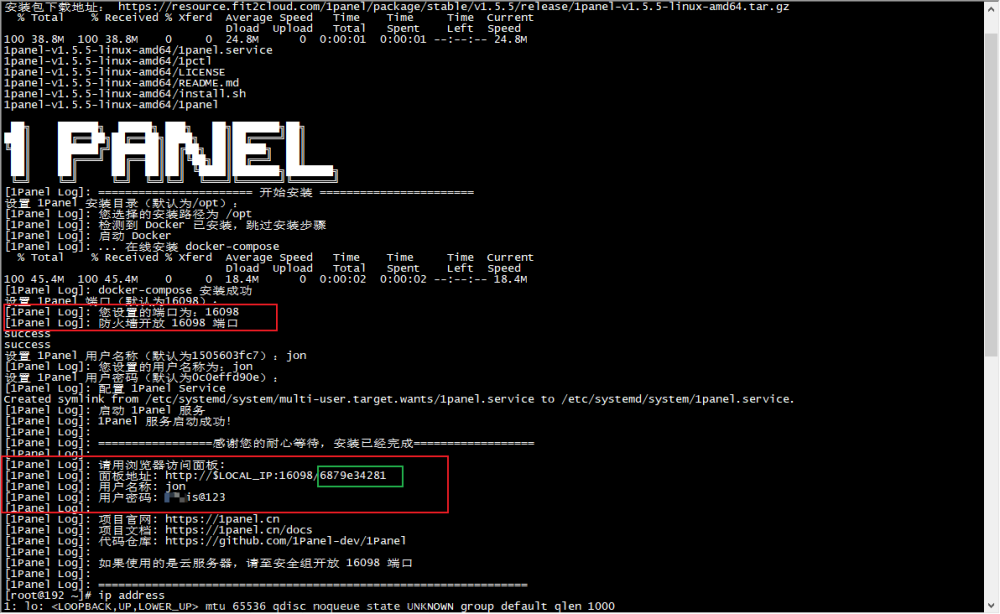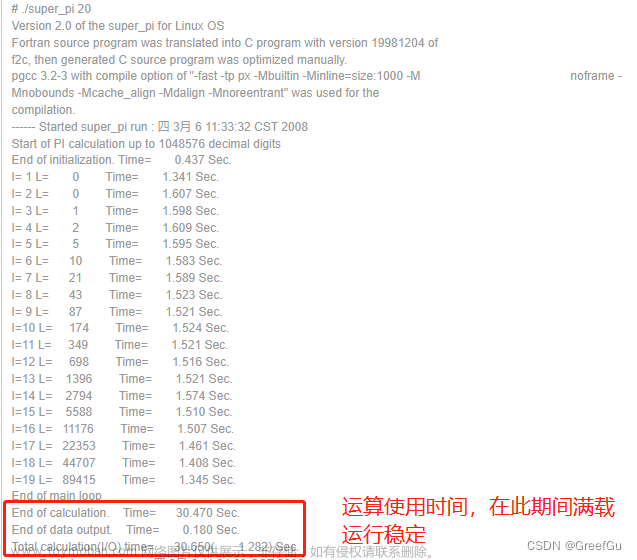在linux下,特别是shell脚本中,我们经常会遇到${}、$()、$[]、$(())、[]、[[]]、(()),眼花之凌乱,让我们傻傻分不清,下面就为大家讲解一下它们的作用及主要用法
1.${}
首先,当${}用来引用变量时,其等价于$,只不过${}可以指定变量边界
[root@rhel77 yum]# a=123
[root@rhel77 yum]# b=$a
[root@rhel77 yum]# echo $b
123
[root@rhel77 yum]# b=${a}
[root@rhel77 yum]# echo $b
123
[root@rhel77 yum]#
其次,${}可以用来对字符串进行截取及替换处理
| 变量设定方式 | 说明 |
| ${string#substring} | 从$string的开头位置截掉最短匹配的$substring |
| ${string##substring} | 从$string的开头位置截掉最长匹配的$substring |
| ${string%substring} | 从$string的结尾位置截掉最短匹配的$substring |
| ${string%%substring} | 从$string的结尾位置截掉最长匹配的$substring |
| ${string/substring/replacement} | 使用$replacement来替换第一个匹配的$substring |
| ${string//substring/replacement} | 使用$replacement来替换所有匹配的$substring |
| ${string/#substring/replacement} | 如果$substring匹配$string的开头部分, 那么就用$replacement来替换$substring |
| ${string/%substring/replacement} | 如果$substring匹配$string的结尾部分, 那么就用$replacement来替换$substring |
E.g:
${string#substring} -->从$string的开头位置截掉最短匹配的$substring
[root@rhel77 ~]# test=xyzXYZ123456xyzXYZ
[root@rhel77 ~]# echo ${test#x*Z}
123456xyzXYZ
[root@rhel77 ~]#
${string#substring} -->从$string的开头位置截掉最长匹配的$substring
[root@rhel77 ~]# test=xyzXYZ123456xyzXYZ
[root@rhel77 ~]# echo ${test##x*Z}
[root@rhel77 ~]#
${string%substring} -->从$string的结尾位置截掉最短匹配的$substring
[root@rhel77 ~]# test=xyzXYZ123456xyzXYZ
[root@rhel77 ~]# echo ${test%x*Z}
xyzXYZ123456
[root@rhel77 ~]#
${string%%substring} -->从$string的结尾位置截掉最长匹配的$substring
[root@rhel77 ~]# test=xyzXYZ123456xyzXYZ
[root@rhel77 ~]# echo ${test%%x*Z}
[root@rhel77 ~]#
${string/substring/replacement} -->使用$replacement来替换第一个匹配的$substring
[root@rhel77 ~]# test=xyzXYZ123456xyzXYZ
[root@rhel77 ~]# echo ${test/xyz/ztj}
ztjXYZ123456xyzXYZ
[root@rhel77 ~]#
${string//substring/replacement} -->使用$replacement来替换所有匹配的$substring
[root@rhel77 ~]# test=xyzXYZ123456xyzXYZ
[root@rhel77 ~]# echo ${test//xyz/ztj}
ztjXYZ123456ztjXYZ
[root@rhel77 ~]#
${string/#substring/replacement} -->如果$substring匹配$string的开头部分, 那么就用$replacement来替换$substring
[root@rhel77 ~]# echo ${test/#xyz/ztj}
ztjXYZ123456xyzXYZ
[root@rhel77 ~]#
${string/%substring/replacement} -->如果$substring匹配$string的结尾部分, 那么就用$replacement来替换$substring
[root@rhel77 ~]# test=xyzXYZ123456XYZxyz
[root@rhel77 ~]# echo ${test/%xyz/ztj}
xyzXYZ123456XYZztj
[root@rhel77 ~]# 注意上下对比
[root@rhel77 ~]# test=xyzXYZ123456xyzXYZ
[root@rhel77 ~]# echo ${test/%xyz/ztj}
xyzXYZ123456xyzXYZ
[root@rhel77 ~]#
第三,${}也可以对变量进行判断赋值--了解即可,很少使用
| 变量设定方式 | 说明 |
| ${parameter-default} | 如果变量parameter没被声明, 那么就使用默认值 |
| ${parameter:-default} | 如果变量parameter没被设置, 那么就使用默认值 |
| ${parameter+alt_value} | 如果变量parameter被声明了, 那么就使用alt_value, 否则就使用null字符串 |
| ${parameter:+alt_value} | 如果变量parameter被设置了, 那么就使用alt_value, 否则就使用null字符串 |
| ${parameter=default} | 如果变量parameter没声明, 那么就把它的值设为default |
| ${parameter:=default} | 如果变量parameter没设置, 那么就把它的值设为default |
| ${parameter?err_msg} | 如果parameter已经被声明, 那么就使用设置的值, 否则打印err_msg错误消息 |
| ${parameter:?err_msg} | 如果parameter已经被设置, 那么就使用设置的值, 否则打印err_msg错误消息 |
对于${parameter-default}和${parameter:-default}、${parameter+alt_value}和${parameter:+alt_value}、${parameter=default}和${parameter:=default}、${parameter?err_msg}和${parameter:?err_msg},99.99%情况下,${parameter-default}和${parameter:-default}、${parameter+alt_value}和${parameter:+alt_value}、${parameter=default}和${parameter:=default}、${parameter?err_msg}和${parameter:?err_msg}绝大多数情况下,输出都是一样的。只有在parameter被声明并设置为null值的时候, 多出来的:才会引起这两种形式的不同。
最后,${}也可以获取变量长度
定义数组:
ztj=(ab cd ef ghij123)
[root@rhel77 ~]# ztj=(ab cd ef ghij123) -定义数组
[root@rhel77 ~]# echo ${ztj[@]} -输出数组全部元素
ab cd ef ghij123
[root@rhel77 ~]# echo ${ztj[*]} -输出数组全部元素
ab cd ef ghij123
[root@rhel77 ~]#
[root@rhel77 ~]# echo ${ztj[0]} -输出数组第一个元素,默认数组下标从0开始
ab
[root@rhel77 ~]# echo ${#ztj[@]} -统计数组元素的个数
4
[root@rhel77 ~]# echo ${#ztj[*]} -统计数组元素的个数
4
[root@rhel77 ~]# echo ${#ztj[3]} -计算数组第四个元素的长度,即:ghij123的长度
7
[root@rhel77 ~]# ztj[0]=ztj -将数组第一个元素的数值重新赋值为ztj
[root@rhel77 ~]# echo ${ztj[@]} -输出数组全部元素进行验证
ztj cd ef ghij123
[root@rhel77 ~]#
2.$()
在linux中,$()是用来做命令替换的,其等价于``(反引号)。但是在shell脚本,我们一般使用$(),以增加脚本的可读性
[root@rhel77 ~]# echo $(date +%Y%m%d)
20230706
[root@rhel77 ~]# echo `date +%Y%m%d`
20230706
[root@rhel77 ~]#
例外:
1.``(反引号)不能多次嵌套使用,否则会有异常问题
E.g:
[root@rhel77 ~]# echo ztj `echo test ` echo date is `date +%Y%m%d```
ztj test echo date is 20230706 ---echo date异常输出
[root@rhel77 ~]#
2.$()可以多次嵌套使用,而不会有问题
[root@rhel77 ~]# echo ztj $(echo test $( echo date is $(date +%Y%m%d)))
ztj test date is 20230706 ---echo date正常输出
[root@rhel77 ~]#
3.``(反引号)和$()虽然可以混合使用,但是可读性较差,不建议使用
[root@rhel77 ~]# echo ztj `echo test $( echo date is $(date +%Y%m%d))`
ztj test date is 20230706
[root@rhel77 ~]#
3.$[]
在linux中,$[]是用来进行数学运算的,其等价于$(()),支持+-*/%,并且在使用中变量可以不使用$,直接使用变量名即可
[root@rhel77 ~]# echo $[1+2]
3
[root@rhel77 ~]# a=1
[root@rhel77 ~]# b=2
[root@rhel77 ~]# echo $[a+b]
3
[root@rhel77 ~]# echo $[$a+$b]
3
[root@rhel77 ~]#
4.$(())
在linux中,$(())是用来进行数学运算的,其等价于$[],支持+-*/%,并且在使用中变量可以不使用$,直接使用变量名即可
[root@rhel77 ~]# echo $((1+2))
3
[root@rhel77 ~]# a=1
[root@rhel77 ~]# b=2
[root@rhel77 ~]# echo $((a+b))
3
[root@rhel77 ~]# echo $(($a+$b))
3
[root@rhel77 ~]#
5.[]
在linux中,[]用于判断表达式的是0或非0,以决定程序的执行顺序,其等价于test命令(几乎不常用)
-->逻辑判断
[root@rhel77 ~]# [ ! -d ztj ] && mkdir ztj --目录ztj不存在,则进行创建
[root@rhel77 ~]# ls -ld ztj
drwxr-xr-x 2 root root 6 Jul 6 10:04 ztj
[root@rhel77 ~]#
-->if命令判断
[root@rhel77 ~]# {
> a=java
> if test $a == "linux"
> then
> echo "i am linux"
> elif [ $a == "java" ]
> then
> echo "i am java"
> fi
> }
i am java
[root@rhel77 ~]# {
> a=linux
> if test $a == "linux"
> then
> echo "i am linux"
> elif [ $a == "java" ]
> then
> echo "i am java"
> fi
> }
i am linux
[root@rhel77 ~]#
6.[[]]
在linux中,[[]]是[]的增强版,其返回值也是0或者非0,并且,在[[ ]]中使用> 、< 等符号不需要转义
[root@rhel77 ~]# {
> a=4
> if [ $a \> 5 ]
> then
> echo "$a的值大于5"
> else
> echo "$a的值小于5"
> fi
> }
4的值小于5
[root@rhel77 ~]#
[root@rhel77 ~]# {
> a=4
> if [[ $a > 5 ]]
> then
> echo "$a的值大于5"
> else
> echo "$a的值小于5"
> fi
> }
4的值小于5
[root@rhel77 ~]#
另外:
-->[[]]支持&&和||,也支持==和!=和=~的连接或组合判断(但是不支持>、<、>=、<=等)
[root@rhel77 ~]# {
> a=1
> if [[ $a != 4 && $a != 5 ]]
> then
> echo "hello i am ztj"
> fi
> }
hello i am ztj
[root@rhel77 ~]#
[root@rhel77 ~]# {
> a=1
> if [[ $a != 4 ]] && [[ $a != 5 ]]
> then
> echo "hello i am ztj"
> fi
> }
hello i am ztj
[root@rhel77 ~]#
[root@rhel77 ~]# {
> a=1
> if [ $a != 4 -a $a != 5 ]
> then
> echo "hello i am ztj"
> fi
> }
hello i am ztj
[root@rhel77 ~]#
[root@rhel77 ~]# {
> arch_version=$(arch)
> os_version=$(cat /etc/redhat-release)
> echo $os_version
>
> if [[ "$arch_version" == "x86_64" ]] && [[ "$os_version" =~ "Red Hat Enterprise Linux Server release 7.7 (Maipo)" ]]
> then
> echo "OS is ok"
> fi
> }
Red Hat Enterprise Linux Server release 7.7 (Maipo)
OS is ok
[root@rhel77 ~]#
-->[[ ]]在比较字符串支持正则匹配和通配符匹配,比如:在[[ ]]中进行 == 或者 != 或=~比较时可以进行通配符匹配文章来源:https://www.toymoban.com/news/detail-606233.html
[root@rhel77 ~]# {
> a=linux
> if [[ $a == li* ]]
> then
> echo "hello i am ztj"
> fi
> }
hello i am ztj
[root@rhel77 ~]#
[root@rhel77 ~]# {
> arch_version=$(arch)
> os_version=$(cat /etc/redhat-release)
> echo $os_version
>
> if [[ "$arch_version" == "x86_64" ]] && [[ "$os_version" =~ ^"Red Hat Enterprise Linux Server release 7".* ]]
> then
> echo "OS is ok"
> fi
> }
Red Hat Enterprise Linux Server release 7.7 (Maipo)
OS is ok
[root@rhel77 ~]#
7.(())
在linux中,(())除了结合$进行数学运算之外,还可以用于for或while循环命令中控制循环,类似于c语言,当改变变量的值时,且不需要使用$文章来源地址https://www.toymoban.com/news/detail-606233.html
[root@rhel77 ~]# {
> for((i=1;i<5;i++))
> do
> echo "this is $i"
> done
> }
this is 1
this is 2
this is 3
this is 4
[root@rhel77 ~]#
[root@rhel77 ~]# {
> i=0
> while [ $i -le 5 ]
> do
> echo "this is $i"
> ((i++))
> done
> }
this is 0
this is 1
this is 2
this is 3
this is 4
this is 5
[root@rhel77 ~]#
[root@rhel77 ~]# {
> i=0
> while [ $i -le 5 ]
> do
> echo "this is $i"
> ((i=i+1))
> done
> }
this is 0
this is 1
this is 2
this is 3
this is 4
this is 5
[root@rhel77 ~]#
[root@rhel77 ~]# {
> i=0
> while [ $i -le 5 ]
> do
> echo "this is $i"
> ((++i))
> done
> }
this is 0
this is 1
this is 2
this is 3
this is 4
this is 5
[root@rhel77 ~]#
到了这里,关于linux下${}、$()、$[]、$(())、[]、[[]]、(())的作用及用法说明的文章就介绍完了。如果您还想了解更多内容,请在右上角搜索TOY模板网以前的文章或继续浏览下面的相关文章,希望大家以后多多支持TOY模板网!




![[1Panel]开源,现代化,新一代的 Linux 服务器运维管理面板](https://imgs.yssmx.com/Uploads/2024/02/722869-1.png)






